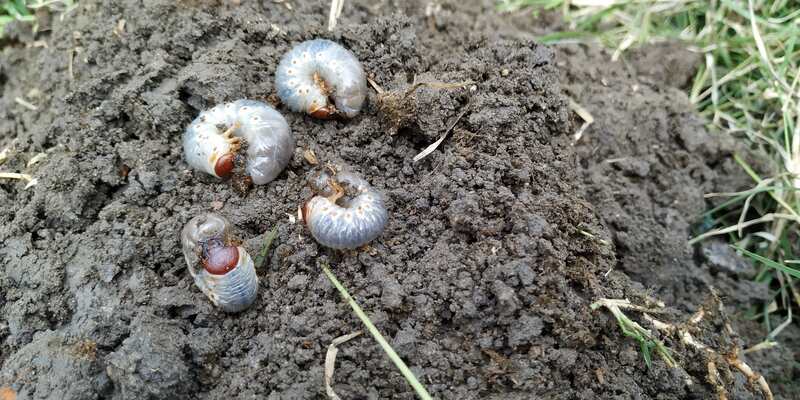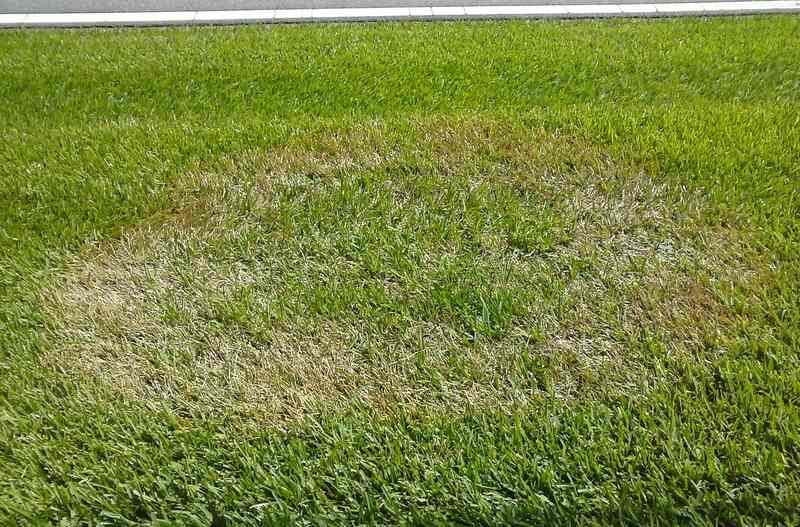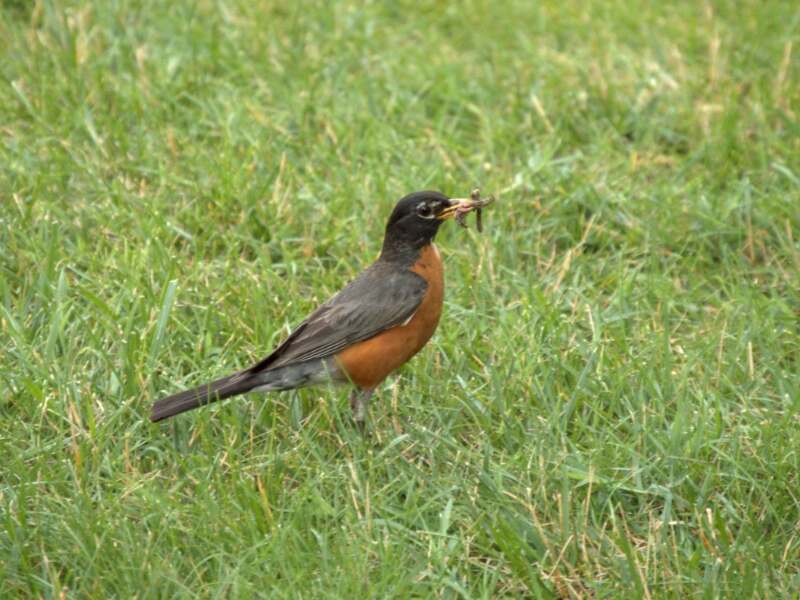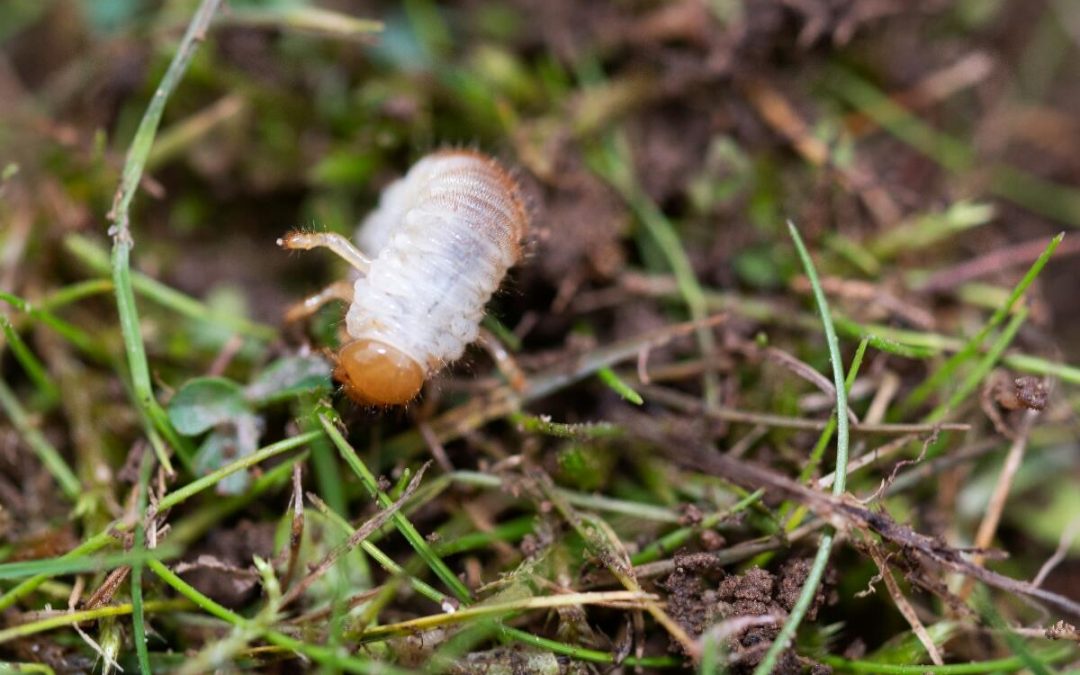Homeowners could be experiencing lawn problems for a few reasons. It is important to identify the issue so you can properly eliminate it and take preventative measures once your lawn is healthy again. Because grubs are one of the most common lawn problems, we will explore the signs of grubs in your lawn. If you see these signs in your lawn, you can begin the process of grub control before they get worse.
1. You See Grubs

Photo Credit: VIKAS KUMAR / Canva Pro / License
First, the good news: having a few grubs in a healthy lawn does not indicate a problem. If you see C-shaped larvae or think you may have grubs, grab a shovel and dig a few small holes in the suspected area.
Now, the not-so-good news: after you dig, if you see more than five grubs per square foot, your yard may have a grub infestation. You do not want to apply grub control products to your grass unless necessary, but waiting to start treatment to get rid of grubs can worsen your grub problem and grub damage. Calling a professional to be sure your lawn needs treatment is always a viable option.
2. Hovering Beetles
The grub problem starts when adult beetles choose your lawn in their search for a healthy habitat to lay their eggs. If you see flying beetles hovering over your grass, your yard could be at the top of their list for a food source and home for their future babies.
Once beetles lay their eggs, it’s only a matter of time before the eggs develop into larvae. In the larval stage, they feed on your grass’s root system. With the nourishment they receive from your lawn, they eventually become adult beetles.
Hovering beetles do not definitively mean you have grubs, but their presence, combined with other symptoms, could be a pretty sure sign.
3. Brown Patches

Photo Credit: Scot Nelson / Wikimedia Commons / CC0
Brown patches or yellow spots are signs your yard may be victim to an unwanted grub population. These irregular patches typically appear in late summer, around August.
Brown spots or patches can be caused by many things, like lawn disease or drought. If you have other indicators of grubs, test for grubs yourself by digging up 1-square-foot portions of the lawn or call a pest control company.
4. Dead Patches
When grubs tunnel into your grass’s roots, they can kill the grass completely, causing dead spots. Multiple dead spots that do not improve are strong indicators of grubs.
5. Increase in Critters

Photo Credit: Anmol Dash / Canva Pro / License
Grubs may be despicable little creatures to us, but to some in the animal kingdom, they are a delectable treat. Armadillos, raccoons, skunks, and birds feed on grubs. If you notice increased animal activity in your yard, it is a sign that your lawn may need a grub treatment. These animals become additional lawn pests, as they cause more damage by digging to get to the white grubs.
6. Springy Grass
Grubs cause damage underground. They eat plant roots and weaken the bond between the roots and grass. The result is grass that feels loose, springy, or spongy when you walk on it. It may feel like you have just laid sod.
Homeowners can test for the possibility of grubs by pulling up patches of grass. Grass that rolls up like unsecured carpet indicates you may have lawn grubs.
FAQ on Identifying Lawn Grubs
What are grubs?
Grubs are beetles that have not become adult beetles yet. When beetles like Japanese and June beetles lay eggs, the eggs advance to the next step in their life cycle, which is larvae. Larvae, also known as white grubs, are squishy and C-shaped, with legs close to their brown heads.
Grubs live underground and feast on the roots of your grass and other organic matter in the soil, which kills sections of the grass. If you don’t attack grub problems before it is too late, your grass will not be stable and firmly attached to the ground. Because the bond between the grass and roots has been weakened, the grass can become very easy to pull up and roll up like a blanket.
Can you get rid of grubs naturally?
Yes. There are both natural ways and chemical methods to get rid of grubs. Natural ways take longer, but they are healthier for you and the environment than non-organic chemical pesticides and insecticides. You can purchase beneficial nematodes, which are microscopic worms that naturally live in the soil. They release bacteria that kill grubs.
You can also put the bacterium milky spore on the lawn to kill Japanese beetle grubs. This bacterium comes in a powder.
Homeowners can also make a neem oil solution with neem oil, water, and Castile soap, and spray it on the lawn.
See our article How to Get Rid of Grubs in Your Lawn to learn more.
Do grubs go away without treatment?
Unfortunately, grubs do not go away on their own. They spread quickly and can cause severe damage to your lawn. If you have signs of grub activity, test for them or call a professional to test and start treatment as soon as possible.
What are some preventative steps for grub control?
Grubs thrive in excess moisture. Be mindful not to overwater your grass in the summer. The more you water, the more you increase the chances moisture will soak deep into the soil layer where grubs live.
Final Thoughts
Good lawn care habits and healthy lawn characteristics that create thriving grass also generate an ideal environment for grubs, like aeration and rich soil. A few grubs are normal, and a healthy lawn can withstand the little slimy creatures. Grubs become a problem when you have too many. When the grub population in your yard becomes too large for your lawn to sustain, you will start to see the signs discussed above.
Whether you have lawn grubs you need to eliminate or you just want a professional to maintain your grass, WikiLawn can connect you to qualified lawn care pros in your area to keep your grass healthy and green.
Main Photo Credit: Peter Shaw / Canva Pro / License

